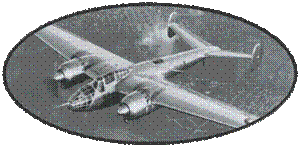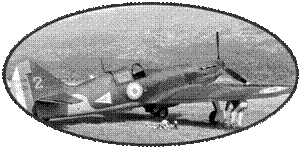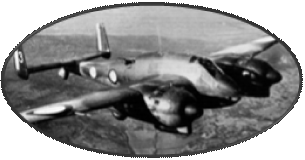172
Breguet 270 were
built after the prototype that made its first flight on February
23, 1929
. They
are divided in :
- 1
prototype named "Breguet 27"
- 9
appareils of pre-série
- 85
Breguet 270 ordered by the French Air Force, on december 1931
- 45
Breguet 271 ordered
by the French Air Force, on december 1932
- 21 Breguet
273 : 15 for the Venezuela and 6 for the China
- 1
Breguet 274
To
date, out of the
172 aircraft
manufactured,
43 are
listed in the list below :

In 1926, the Breguet Company
launched the study of an aircraft in response to a specification
of technical services for an Obsevation aircraft. It must have
a good visibility towards the rear for the observer: it will be
the Breguet 27.
The latter is unusual in
appearance: tailsurfaces is put at the end of a beam which makes
up the back part of the fuselage.Its wing is of the sesquiplan
type, it means that the lower wing is shorter than the upper one.
The latter, twice as long as the aircraft, has a comfortable wing
surface. The apparatus is entirely metallic in design, but in
order to reduce costs, the use of light alloy is reduced to the
just necessary. The assembly method adopted is similar to that
used in automobile manufacture. It is powered by a Hispano-Suiza
12Hb of 500ch with liquid cooling. It has a large landing gear.
His armament consisted of a pair of 7.7mm Lewis machine guns in
the back, a synchronized machine-gun in rear defense and could
carry 120kg of Bombs.
The aircraft made its first
flight on 23 February 1929. The tests will show vibrations at
the level of the tail fins which will be modified, but without
completely resolving this problem. The first prototypes were financed
by Breguet's own funds, and it was not until 1930 that the air
Force ordered 50 aircraft, which had become Breguet 270 in the
meantime. The need will soon be increased to 87 machines. An additional
order will be issued in 1932: in the end, 140 Breguet 270 will
be built
While the production is
launched, the prototype 01 registered F-AJRC, carries out a promotional
tour which will end in Madagascar. The Breguet 270 will be sold
for export, Venezuela and Peru. A version equipped with a Gnome
Rhone K9 of 680ch will be tested on the basis of the n ° 15 and
proposed to Serbia. Although the engine was manufactured under
license, Serbia would not order and the aircraft would join the
Military Air Force in 1934.
The aircraft is available
in several versions. The Breguet 271 receives a Hispano-Suiza
engine 12Xbrs of 650hp more powerful, which allows it to pass
its payload to 1000kg. 3 copies will be made from the Breguet
27 n ° 2, 3 and 5. The Breguet 273 is powered by a Hispano-suiza
12Ybrs of 860hp with a variable pitch propeller. More efficient,
the device can carry 400kg of bombs. The prototype, registered
F-ANFX, makes its first flight in April 1934. This version will
be bought by Venezuela (15 Ex.) And by China (6 Ex.). We can also
mention the Breguet 274, version studied for bombing and powered
by a radial engine Gnome-Rhone 760hp with a three-bladed propeller.
He can carry 800kg of bombs. The prototype registered F-ANHM will
tour Europe. Finally, a version with a single canopy covering
both crew members and larger capacity tanks will be used for links.
The Breguet 27 of series
arrives in unity in 1933 and it is the 3rd Squadron of the 32nd
Squadron which receives the first apparatuses in January 1933
in Dijon.
At the outbreak of hostilities,
the Breguet 27 is present in nine GAOs (Aerial Observation Group).
Although outdated, they will carry out reconnaissance missions
over enemy lines but will gradually be removed from the conbats
at the rate of arrival of the new aircraft (Potez 63-11).On May
10th, 1940, there is still Breguet 27 in the front line, and in
Armisitice 49 aircraft will be still listed. They will quickly
be reformed.













